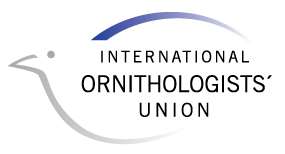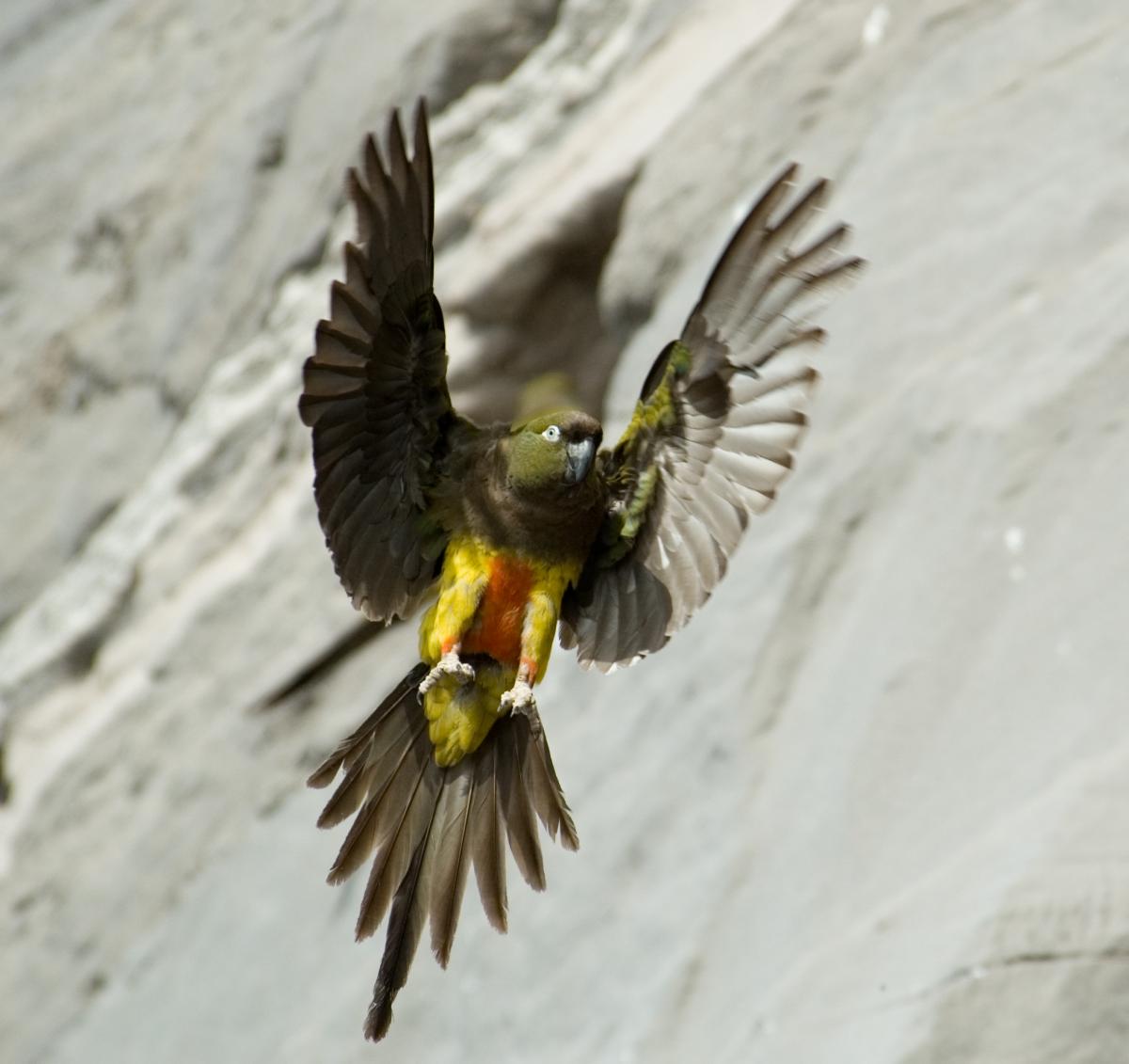Working Group Gondwanan Ornithology
Photo: © Bill Conway
Birds of the Southern Hemisphere differ in many aspects from birds of the Northern Hemisphere. Only about one fifth of the Southern Hemisphere is covered by landmasses compared to twice as much in the Northern Hemisphere. Yet, the Southern Hemisphere supports a disproportionate number of the world’s bird species and families. The geological history of the southern continents, which started to separate from the Gondwana supercontinent about 180-200 million years ago, has deeply influenced the biogeography and evolutionary pathways of the plants, invertebrates, reptiles, mammals, and birds that originated and diversified in Gondwana. Among land birds, these evolutionary processes are exemplified by ratite, psittaciform and passerine birds. Among seabirds, these are exemplified by procellariform and sphenisciform birds, which have greatly diversified by taking advantage of the multitude of the oceanic islands. Nevertheless, most ornithological research has traditionally been carried out in the Northern Hemisphere and its conclusions have usually been extrapolated to the birds of the entire planet. However, recent ornithological research on Gondwanan birds has brought to light new surprising insights in avian biology and has, thereby, contributed significantly to broadening and advancing our understanding of ornithology as a discipline. Unfortunately, the vast distances among southern continents and islands and the generally limited economic support available for scientific research in many parts of this region have hampered the capacity of ornithologists to engage in co-operative ornithological research programs across the Southern Hemisphere.
The Working Group on Gondwanan Ornithology was initialised at the 27thInternational Ornithological Congress in Vancouver in 2018 as the co-ordinating organ for intra-hemispheric joint research. The working group was formally established by the IOU in 2019. The mission of the Gondwanan Ornithology Working Group is to:
- Promote the exchange of information among researchers working in the Southern Hemisphere
- Propose, promote, and establish cooperative intra- and trans-hemispheric research
- Identify cases in which Southern Hemisphere birds offer alternative models for the investigation of fundamental ecological, biological or evolutionary questions
- Identify gaps in the knowledge of Southern Hemisphere birds to further advance the understanding of avian biology and support initiatives for conservation
The main activity of the working group during the first four years was the publication of an opinion paper to demonstrate the importance of the above-described objectives:
- Theuerkauf J., Villavicencio C.P., Adreani N.M., Attisano A., Craig A., D’Amelio P.B., Gula R., Lee A.T.K., Mentesana L., Quillfeldt P., Quirici V., Quispe R., Vásquez R.A., Wingfield J.C., Masello J.F. 2022. Austral birds offer insightful complementary models in ecology and evolution. Trends in Ecology & Evolution 37: 759-767. https://doi.org/10.1016/j.tree.2022.05.003
Organisation
Chair: Jörn Theuerkauf, Museum and Institute of Zoology, Polish Academy of Sciences, La Foa, New Caledonia, jtheuer@miiz.eu
Vice-chair: Camila Villavicencio, Universidad de Chile, camilavillavi@gmail.com
Founding members
Nicolas M. Adreani, Max Planck Institute for Ornithology, Germany, mnadreani@orn.mpg.de
Dr. Alfredo Attisano, Museum and Institute of Zoology, Polish Academy of Sciences, Warsaw, Poland, attisano@miiz.waw.pl
Prof. Jim Briskie, University of Canterbury, New Zealand, jim.briskie@canterbury.ac.nz
Prof. Diane Brunton, Massey University, New Zealand, d.h.brunton@massey.ac.nz
Assoc. Prof. Isabel Castro, Massey University, New Zealand, i.c.castro@massey.ac.nz
Prof. Colleen T. Downs (IOU Fellow), University of KwaZulu-Natal, South Africa, downs@ukzn.ac.za
Dr. Brian Gill, Auckland Museum (associate emeritus), New Zealand, adiantum@outlook.co.nz
Prof. Robert Heinsohn (IOU Fellow), Australian National University, Australia, robert.heinsohn@anu.edu.au
Dr. Nataly Hidalgo Aranzamendi, Museo de Historia Natural UNSA, Arequipa, Peru and Monash University, Australia, nhidalgoa@gmail.com
Prof. Dominique G. Homberger (IOU President), Louisiana State University, Dept. of Biological Sciences, USA,zodhomb@lsu.edu
Dr. Richard Loyn (IOU Fellow), Eco Insights; La Trobe University; Charles Sturt University, Australiarichard.loyn@bigpond.com
Dr. Juan F. Masello (IOU Fellow), University of Giessen, Germany, juan.f.masello@bio.uni-giessen.de
Prof. Melanie Massaro, Charles Sturt University, Australia, mmassaro@csu.edu.au
Lucia Mentesana, Max Planck Institute for Ornithology, Germany, luciamentesana@gmail.com
Assoc. Prof. Adrian Paterson, Lincoln University, New Zealand, adrian.paterson@lincoln.ac.nz
Dr. Pauline Provini, Muséum National d'Histoire Naturelle Paris, France, pauline.provini@mnhn.fr
Prof. Juan C. Reboreda (IOU Fellow), University of Buenos Aires, Argentina, reboreda@ege.fcen.uba.ar
Dr. Juan Rivero de Aguilar, Institto de Ecología y Biodiversidad, Chile, juanrdac@gmail.com
Dr. Luis Fabio Silveira, Museu de Zoologia da Universidade de São Paulo, Brazil, lfs@usp.br
Prof. Jörn Theuerkauf (IOU Fellow), Museum and Institute of Zoology, Polish Academy of Sciences, La Foa, New Caledonia, jtheuer@miiz.eu"
Prof. Rodrigo Vasquez (IOU Fellow), Faculty of Sciences, University of Chile, Chile, rvasquez@uchile.cl
Dr. Camila Villavicencio, Universidad de Chile, Chile, camilavillavi@gmail.com
Prof. John Wingfield (IOU Fellow), University of California, Davis, USA, jcwingfield@ucdavis.edu

